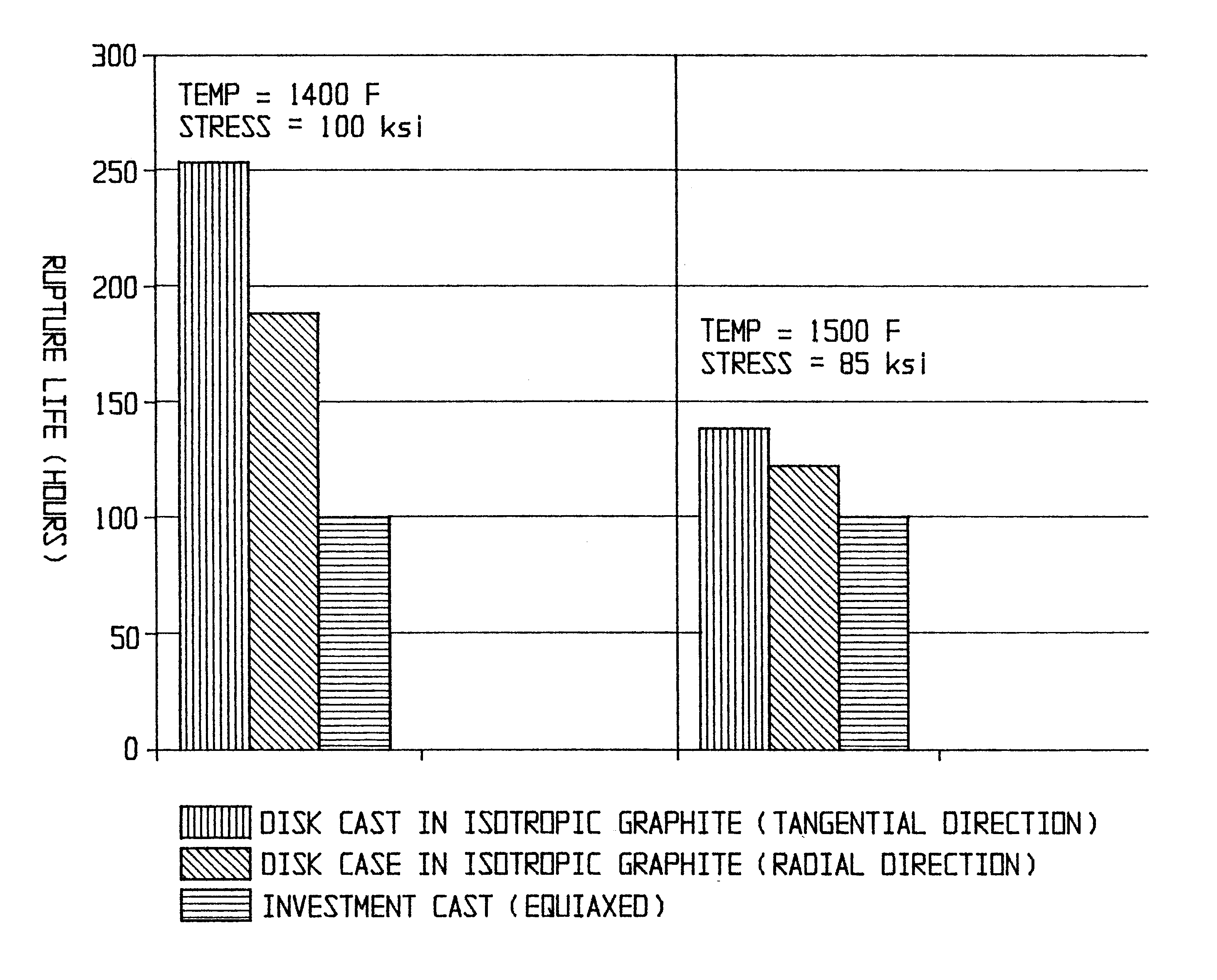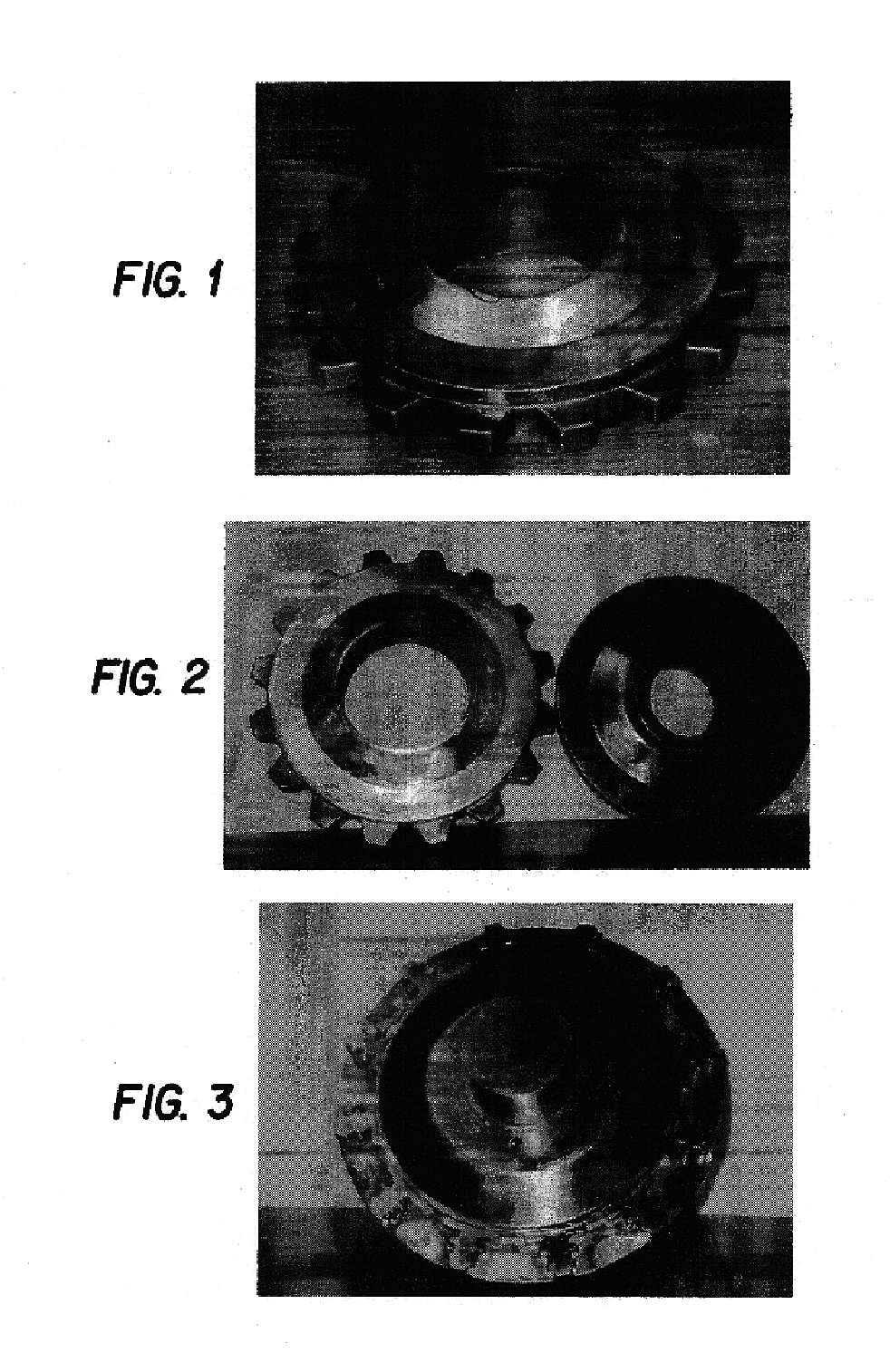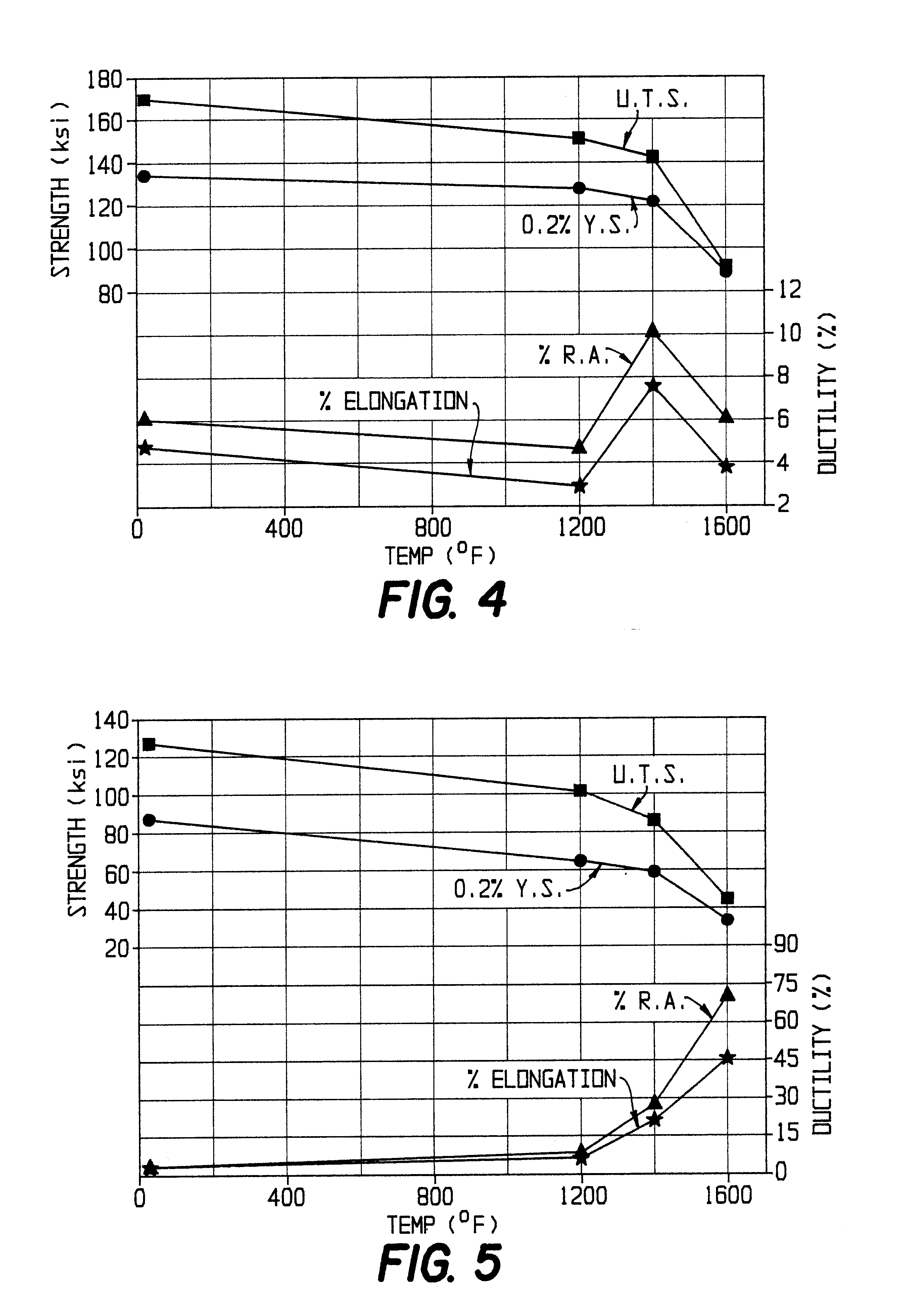Castings of metallic alloys with improved surface quality, structural integrity and mechanical properties fabricated in finegrained isotropic graphite molds under vacuum
a technology of isotropic graphite and molds, which is applied in the direction of pretreatment surfaces, metal-working apparatus, and foundation moulds. it can solve the problems of increasing the cost of production, difficult forging or machining of high alloyed nickel, cobalt, and/or iron-based superalloys, and achieves superior mechanical properties. , the effect of improving the quality of the casting and reducing the cost of manufacturing
- Summary
- Abstract
- Description
- Claims
- Application Information
AI Technical Summary
Benefits of technology
Problems solved by technology
Method used
Image
Examples
example 1
Various nickel, cobalt and iron base superalloys that have been successfully vacuum induction melted and vacuum cast in isotropic graphite molds as round and square bars with high integrity and quality are given in Table 3.
Typical shapes of castings fabricated are as follows:
(1) 1 inch diameter.times.25 inches long
(2) 1 / 2 inch diameter.times.25 inches long
(3) 1 / 4 inch diameter.times.25 inches long
(4) 4 inches.times.4 inches.times.14 inches long
(5) 7 inches diameter.times.20 inches long
(6) stylized turbine disc
(7) disc with gear teeth
(8) disc with fir tree groove along the circumference.
Castings produced in isotropic graphite molds show significantly better quality containing less casting defects than those made in extruded graphite molds.
For example, several of the alloys listed in TABLE 3 such as IN 738, Rene 142, PWA 795 and Pmet 920 when vacuum melted and cast as 1 inch diameter.times.25 inch long bars in isotropic graphite molds (R 8500) showed excellent surface quality free fro...
example 2
Experiments with Heated Molds
Several experiments were made with isotropic graphite molds heated above ambient temperature in the vacuum chamber prior to pouring the molten alloy in the molds. The molds heated to temperatures between 150.degree. C. and 800.degree. C. are best suited to produce castings with excellent surface quality and integrity. When the mold is kept unheated (i.e., at room temperature), during gravity filling of the mold, the molten alloy may produce splatters / droplets upon impact with the mold surface which may quickly freeze in contact with the cold mold walls. The prematurely solidified splatters / droplets get embedded on the casting surface and appear as casting defects. When the mold is heated, the mold can be filled up with melt prior to the start of solidification. The splatters formed during filling do not stick to the heated mold walls and once the entire mold is filled up, then only the solidification of the melt begins. The casting surface obtained with ...
example 3
Castings of Shapes
Several split molds were made from R8500 isotropic graphite blocks used to make castings of different shapes. The alloy Mar-M-247 (a nickel base superalloy) was vacuum melted and successfully cast in the molds producing sound high quality castings. Typical shapes produced were: a stylized turbine disc, a disc with gear teeth and a disc with fir-tree slots. The castings typically weighed 25 to 35 lbs. each. After each casting was made, the mold showed no wear and tear or reaction with the melt. The mold was evaluated to be suitable for repeated production of similar castings with consistent and reproducible quality. FIGS. 1, 2 and 3 show the examples of typical castings of different shapes made with Mar-M-247 alloy using an isotropic graphite mold in accordance with the present invention.
The stylized disc casting of Mar-M-247 alloy was cut into several sections. Tensile and stress rupture test specimens were prepared from round bars obtained from these sections afte...
PUM
| Property | Measurement | Unit |
|---|---|---|
| Grain size | aaaaa | aaaaa |
| Grain size | aaaaa | aaaaa |
| Length | aaaaa | aaaaa |
Abstract
Description
Claims
Application Information
 Login to View More
Login to View More - R&D
- Intellectual Property
- Life Sciences
- Materials
- Tech Scout
- Unparalleled Data Quality
- Higher Quality Content
- 60% Fewer Hallucinations
Browse by: Latest US Patents, China's latest patents, Technical Efficacy Thesaurus, Application Domain, Technology Topic, Popular Technical Reports.
© 2025 PatSnap. All rights reserved.Legal|Privacy policy|Modern Slavery Act Transparency Statement|Sitemap|About US| Contact US: help@patsnap.com



